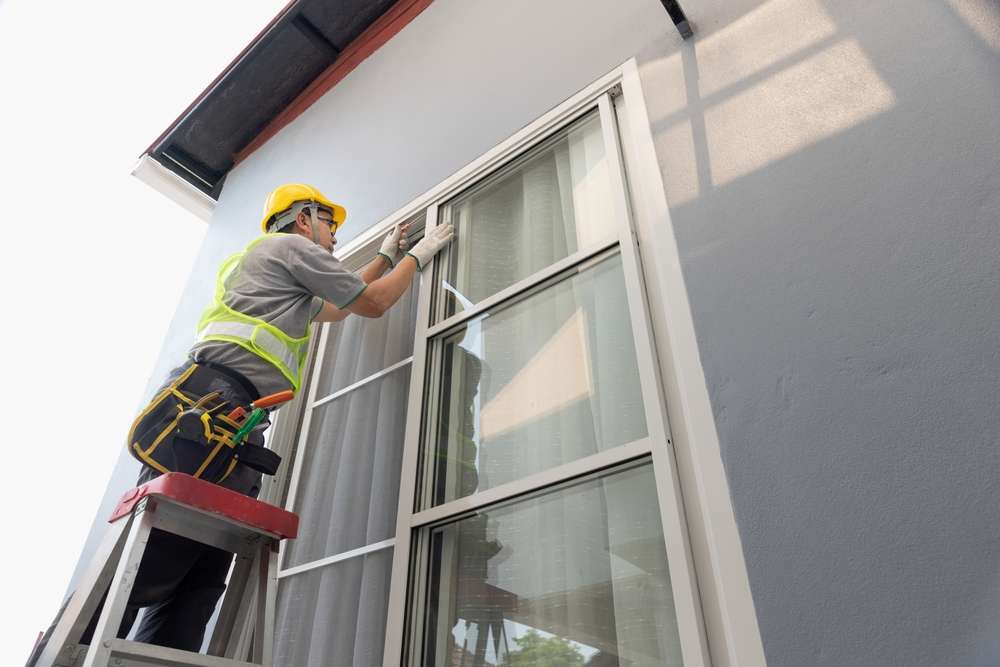The Ultimate Roofing Replacement Guide: What Homeowners Should Know
A damaged or aging roof doesn’t just affect your home’s look—it threatens its safety and value. Understanding roofing replacement helps you protect your investment and avoid unexpected costs down the road.Most homeowners notice warning signs before major issues begin. If your roof is over 15–20 years old, or you spot missing shingles, leaks, or soft spots, it might be time for a full replacement.

A roof replacement is a major investment that requires careful planning and consideration. Whether your roof has reached the end of its lifespan, sustained storm damage, or simply shows signs of wear, knowing what to expect during the replacement process can save you time, money, and stress. This guide provides homeowners with essential information to navigate roofing replacement projects successfully.
What Is Roofing Replacement and When Do You Need It?
Roofing replacement involves removing your existing roof down to the deck and installing a completely new roofing system. Unlike repairs that address specific problem areas, replacement provides a fresh start with new materials and updated protection. Most asphalt shingle roofs last 20 to 25 years, while metal and tile roofs can last 50 years or more. Signs that you need replacement include widespread shingle damage, multiple leaks, sagging areas, granule loss, and age-related deterioration. If repairs become frequent and costly, replacement often becomes the more economical long-term solution.
How Much Does Roof Replacement Cost?
Understanding the financial aspect of roofing replacement helps homeowners budget appropriately and avoid surprises. The cost varies significantly based on roof size, material choice, pitch complexity, location, and labor rates. National averages provide a general framework, but local market conditions heavily influence final pricing. Factors affecting cost include removal and disposal of old materials, structural repairs to decking, permits and inspections, material quality and warranty levels, and accessibility challenges. Homeowners should obtain multiple detailed quotes and verify that estimates include all necessary components of the project.
Finding Qualified Local Service Providers
Selecting the right contractor is crucial to a successful roofing replacement. When searching for local services in your area, prioritize licensed and insured professionals with established reputations. Check online reviews, request references from recent projects, and verify credentials with state licensing boards. Reputable contractors provide detailed written estimates, explain material options clearly, offer warranties on both materials and workmanship, maintain proper insurance coverage, and communicate transparently throughout the project. Avoid contractors who demand large upfront payments, pressure you into immediate decisions, or cannot provide proof of insurance and licensing.
Comparing Roofing Material Options and Pricing
Choosing the right roofing material balances aesthetics, durability, climate suitability, and budget considerations. Each material offers distinct advantages and cost profiles that homeowners should evaluate carefully.
| Material Type | Average Cost per Square Foot | Lifespan | Key Benefits |
|---|---|---|---|
| Asphalt Shingles | $3.50 - $5.50 | 20-30 years | Affordable, widely available, easy installation |
| Metal Roofing | $7.00 - $12.00 | 40-70 years | Durability, energy efficiency, fire resistance |
| Clay/Concrete Tile | $10.00 - $18.00 | 50+ years | Longevity, distinctive appearance, fire resistance |
| Wood Shakes | $6.00 - $9.00 | 25-30 years | Natural aesthetic, insulation properties |
| Slate | $15.00 - $30.00 | 75-100+ years | Premium durability, timeless elegance |
Prices, rates, or cost estimates mentioned in this article are based on the latest available information but may change over time. Independent research is advised before making financial decisions.
Asphalt shingles remain the most popular choice for residential roofing due to their affordability and versatility. Metal roofing has gained popularity for its longevity and energy-saving properties. Premium materials like slate and tile offer exceptional durability but require structural support due to their weight. Climate considerations also matter—metal performs well in areas with heavy snow, while tile suits hot, dry climates.
Understanding the Roofing Replacement Process
Knowing what happens during a roofing replacement helps homeowners prepare and set realistic expectations. The typical process begins with a thorough inspection and estimate, followed by material selection and contract signing. Before work begins, contractors obtain necessary permits and order materials. The actual replacement involves removing old roofing materials, inspecting and repairing the roof deck, installing underlayment and moisture barriers, applying new roofing material, installing flashing around chimneys and vents, and completing a final inspection. Most residential roofing replacements take between three days and one week, depending on size and complexity. Weather conditions can cause delays, so flexibility in scheduling is important.
Important Considerations for Your Roofing Project
Several factors beyond basic installation affect the success and longevity of your new roof. Proper ventilation prevents moisture buildup and extends roof life, while adequate insulation improves energy efficiency. Warranty coverage varies significantly between manufacturers and contractors—understand what is covered and for how long. Building codes and homeowner association requirements may dictate material choices and colors. Seasonal timing can impact both cost and scheduling, with spring and fall typically being the busiest periods. Consider future maintenance requirements and accessibility for inspections and minor repairs when selecting materials.
Maximizing Your Investment in a New Roof
A roof replacement represents a substantial investment in your home’s protection and value. To maximize this investment, choose quality materials appropriate for your climate, work with reputable licensed contractors, ensure proper installation following manufacturer specifications, maintain adequate attic ventilation and insulation, schedule regular inspections to catch minor issues early, and keep documentation of warranties and installation details. A well-installed quality roof not only protects your home from the elements but also enhances curb appeal and can improve energy efficiency. While the upfront cost may seem significant, a properly replaced roof provides decades of reliable protection and peace of mind.
Replacing your roof is a complex decision that involves balancing immediate costs with long-term value. By understanding the process, researching material options, selecting qualified professionals, and planning carefully, homeowners can navigate roofing replacement projects with confidence. Taking time to make informed choices ensures your new roof will protect your home effectively for many years to come.



